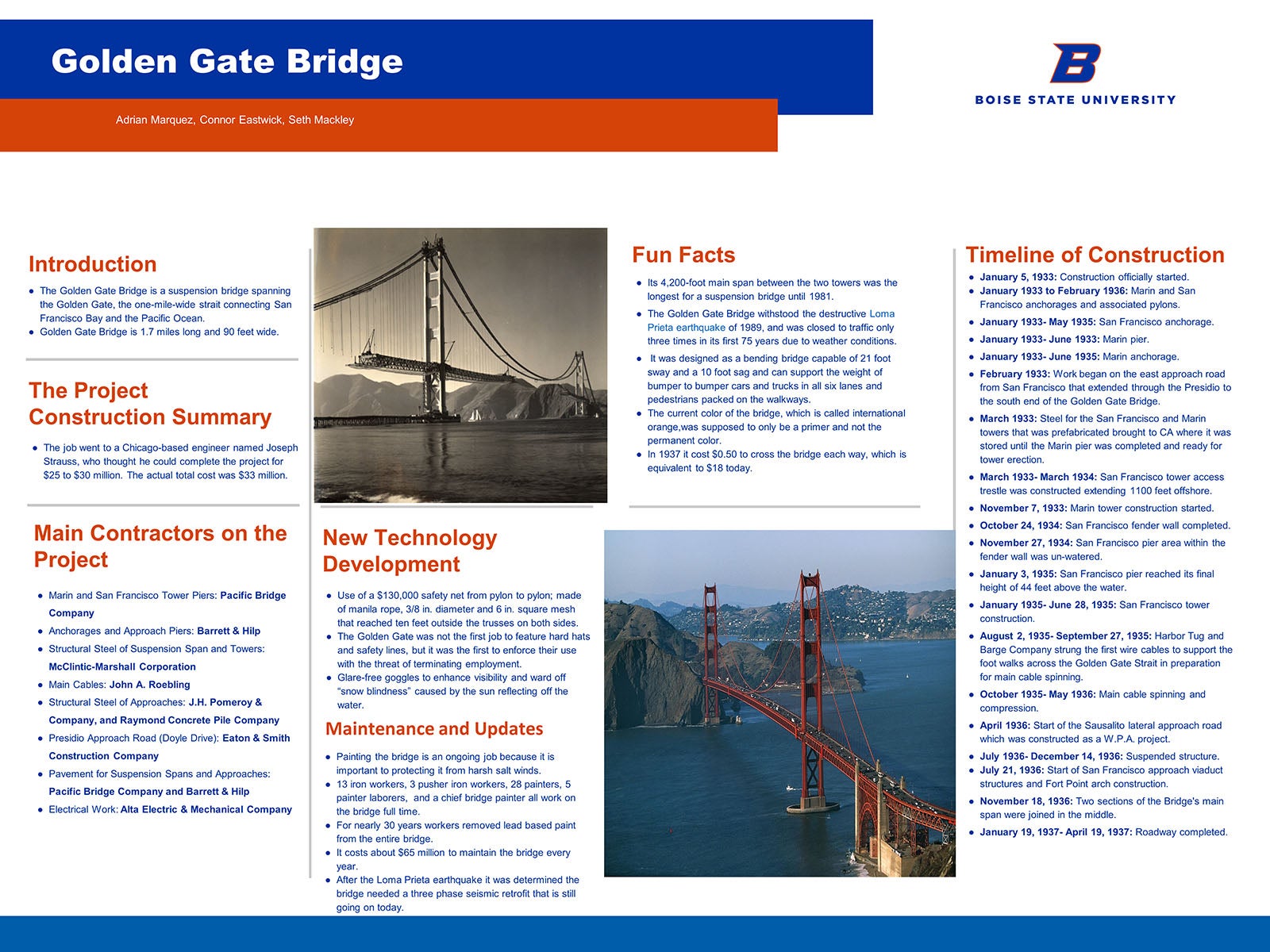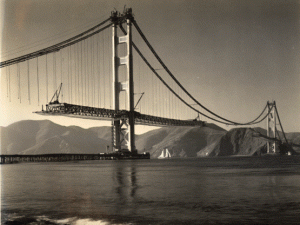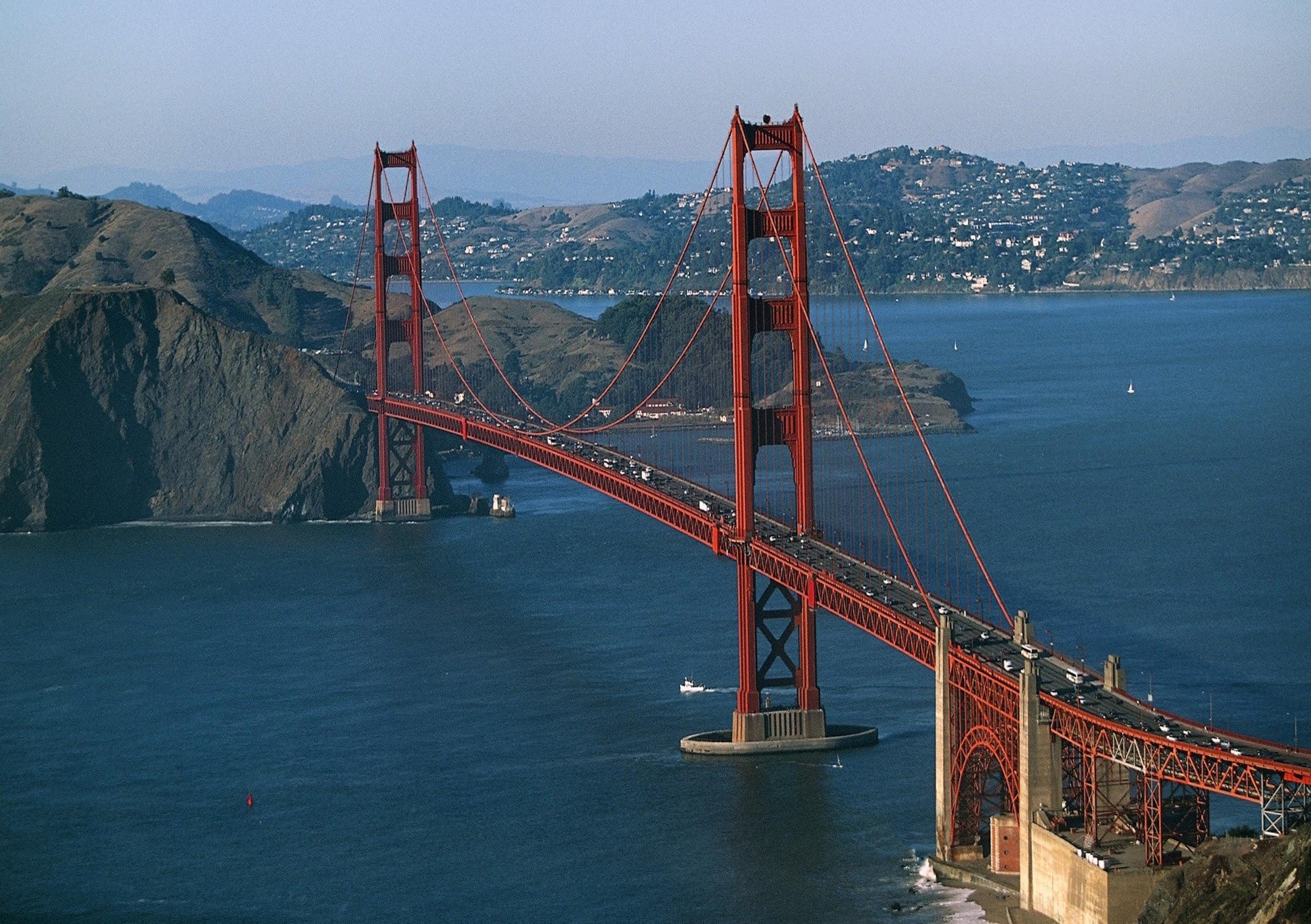Seth Mackley, Connor Eastwick, Adrian Marquez, Dr. Kirsten Davis

Introduction

- The Golden Gate Bridge is a suspension bridge spanning the Golden Gate, the one-mile-wide strait connecting San Francisco Bay and the Pacific Ocean.
- Golden Gate Bridge is 1.7 miles long and 90 feet wide.
The Project Construction Summary
- The job went to a Chicago-based engineer named Joseph Strauss, who thought he could complete the project for $25 to $30 million. The actual total cost was $33 million.
Main Contractors on the Project
- Marin and San Francisco Tower Piers: Pacific Bridge Company
- Anchorages and Approach Piers: Barrett & Hilp
- Structural Steel of Suspension Span and Towers: McClintic-Marshall Corporation
- Main Cables: John A. Roebling
- Structural Steel of Approaches: J.H. Pomeroy & Company, and Raymond Concrete Pile Company
- Presidio Approach Road (Doyle Drive): Eaton & Smith Construction Company
- Pavement for Suspension Spans and Approaches: Pacific Bridge Company and Barrett & Hilp
- Electrical Work: Alta Electric & Mechanical Company
New Technology Development

- Use of a $130,000 safety net from pylon to pylon; made of manila rope, 3/8 in. diameter and 6 in. square mesh that reached ten feet outside the trusses on both sides.
- The Golden Gate was not the first job to feature hard hats and safety lines, but it was the first to enforce their use with the threat of terminating employment.
- Glare-free goggles to enhance visibility and ward off “snow blindness” caused by the sun reflecting off the water.
Maintenance and Updates
- Painting the bridge is an ongoing job because it is important to protecting it from harsh salt winds.
- 13 iron workers, 3 pusher iron workers, 28 painters, 5 painter laborers, and a chief bridge painter all work on the bridge full time.
- For nearly 30 years workers removed lead based paint from the entire bridge.
- It costs about $65 million to maintain the bridge every year.
- After the Loma Prieta earthquake it was determined the bridge needed a three phase seismic retrofit that is still going on today.
Fun Facts
- Its 4,200-foot main span between the two towers was the longest for a suspension bridge until 1981.
- The Golden Gate Bridge withstood the destructive Loma Prieta earthquake of 1989, and was closed to traffic only three times in its first 75 years due to weather conditions.
- It was designed as a bending bridge capable of 21 foot sway and a 10 foot sag and can support the weight of bumper to bumper cars and trucks in all six lanes and pedestrians packed on the walkways.
- The current color of the bridge, which is called international orange,was supposed to only be a primer and not the permanent color.
- In 1937 it cost $0.50 to cross the bridge each way, which is equivalent to $18 today.
Timeline of Construction
- January 5, 1933: Construction officially started.
- January 1933 to February 1936: Marin and San Francisco anchorages and associated pylons.
- January 1933- May 1935: San Francisco anchorage.
- January 1933- June 1933: Marin pier.
- January 1933- June 1935: Marin anchorage.
- February 1933: Work began on the east approach road from San Francisco that extended through the Presidio to the south end of the Golden Gate Bridge.
- March 1933: Steel for the San Francisco and Marin towers that was prefabricated brought to CA where it was stored until the Marin pier was completed and ready for tower erection.
- March 1933- March 1934: San Francisco tower access trestle was constructed extending 1100 feet offshore.
- November 7, 1933: Marin tower construction started.
- October 24, 1934: San Francisco fender wall completed.
- November 27, 1934: San Francisco pier area within the fender wall was un-watered.
- January 3, 1935: San Francisco pier reached its final height of 44 feet above the water.
- January 1935- June 28, 1935: San Francisco tower construction.
- August 2, 1935- September 27, 1935: Harbor Tug and Barge Company strung the first wire cables to support the foot walks across the Golden Gate Strait in preparation for main cable spinning.
- October 1935- May 1936: Main cable spinning and compression.
- April 1936: Start of the Sausalito lateral approach road which was constructed as a W.P.A. project.
- July 1936- December 14, 1936: Suspended structure.
- July 21, 1936: Start of San Francisco approach viaduct structures and Fort Point arch construction.
- November 18, 1936: Two sections of the Bridge’s main span were joined in the middle.
- January 19, 1937- April 19, 1937: Roadway completed.